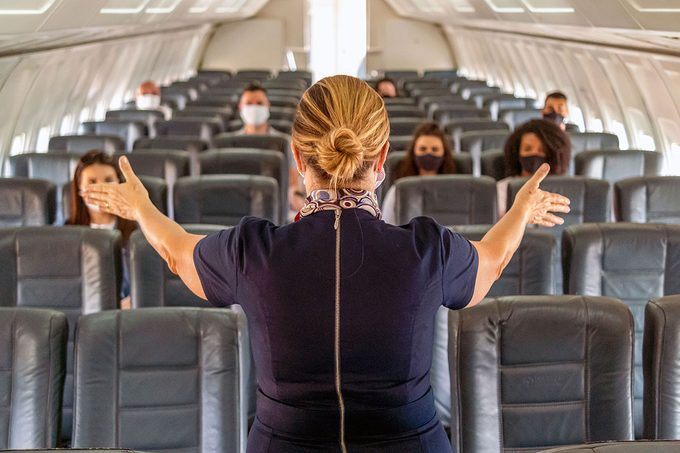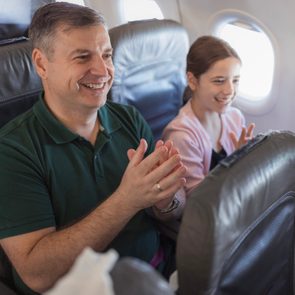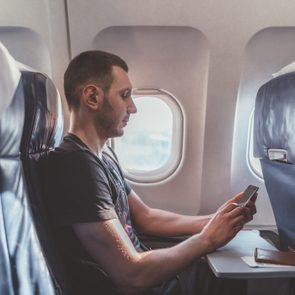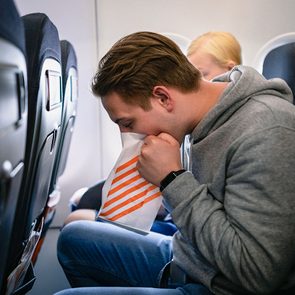Those orders from flight attendants to open the window shades aren't about getting the mood lighting just right—they actually serve an important purpose

The Surprising Reason Flight Attendants Ask You to Open Window Shades During Takeoff and Landing

Raise them, lower them, raise ’em again. A plane’s window shades tend to get quite a workout during a typical flight, but many passengers don’t realize why flight attendants often care so much about their position, especially at the beginning and end of a trip. Is it for the great views? To help bored children and film buffs see their seat-back screens better?
I’ve been prodded awake from a slumped-in-my-seat slumber to raise a shade more than once. But on a recent 6 a.m. flight out of New York, shades were at every level during takeoff—and flight attendants didn’t seem to mind. So what’s the deal? Not to throw shade on the subject of shades, but there must be more to it than meets the eye, right?
It turns out there’s a fundamental—and surprisingly important—reason behind the ritual. And it’s one that makes getting woken up for it a little easier to accept. Read on for the details.
Get Reader’s Digest’s Read Up newsletter for more travel, tech, cleaning, humor and fun facts all week long.
Why do those shade directions always seem to happen during takeoff and landing?
It boils down to safety—and the fact that takeoff and landing are two of the riskiest phases of a flight. According to the International Air Transport Association (IATA), tail strikes and runway incursions ranked among the leading causes of serious accidents in 2024.
While flying is still one of the best and most efficient ways to get from point A to point B—as illustrated by the 5 billion passengers who traveled on 40 million flights in 2024—accidents do happen. Last year, there were seven fatal incidents resulting in 251 deaths, and 2025 has already seen its share of crashes and other airline issues. In the event of an emergency, there are a few things that could increase the odds of survival in certain types of incidents. This shade directive is one of them.
Why do flight attendants ask you to open the window shades during takeoff and landing?
“The reason window shades should be up during the takeoff and landing phases is in the event that flight attendants need to evacuate passengers,” explains Daniel Bubb, a former commercial pilot and author of Landing in Las Vegas: Commercial Aviation and the Making of a Tourist City. Here’s how having the shades up can help:
Flight attendants need to see what’s going on outside
Keeping window shades open helps flight attendants quickly assess external conditions. For example, if a plane’s right engine is on fire, the crew needs to determine the best route to safety. “Instead of evacuating passengers on that side of the plane, which would put them in danger, evacuating them on the left side of the plane is the safest side,” Bubb says.
Open window shades during landing gives pilots extra eyes in the sky
Flight attendants can assist pilots by spotting issues during landing that they might not be able to see from the cockpit. For instance, Bubb explains, if an engine is on fire, pilots may be alerted by indicators and alarms—but they can’t physically see the engine. “The flight attendants can see it and alert the pilots [about what’s happening],” he says.
Raising shades help passengers’ eyes adjust to the light—or lack thereof

At night, open window shades combined with dimmed cabin lights help passengers’ eyes adjust to the darkness in case something goes wrong during takeoff and landing. “If passengers need to evacuate the aircraft, by having the window shades up, their eyes are already used to the dark,” Bubb says. “This way, when they are outside of the airplane, they won’t bump into any obstacles or other passengers.”
The same principle holds true during the day, when passengers’ eyes need to be adjusted to bright daylight rather than a dim cabin in order to see clearly in an emergency.
Why else is it a good idea to have the window shades open?
Sometimes simply seeing that the plane is in the air can offer peace of mind and help ease passengers’ anxiety. And for anyone who’s experienced a hard landing, that sudden jolt can be more than a little unnerving, which is why knowing it’s coming can make a difference. “For me personally, when the plane is landing, it is helpful to have the shade up so that I know when to brace for the impact when the airplane lands on the runway,” Bubb says.
Do all flights require this?
While raising window shades is a key way to maximize safety, there’s no universal rule. On my recent flight out of New York, some shades were up, others down—proof that the practice is not set in stone.
Still, Bubb points out, “while there aren’t any regulations that mandate when the shades should be up, aviation regulators strongly recommend it. Some airlines might have it as policy, but enforcement usually is up to the flight attendants working on a flight.”
RELATED:
- Here’s Why Flight Attendants Always Sit on Their Hands During Takeoff and Landing
- The Real Reason Why a Flight Attendant Won’t Lift Your Bag into the Overhead Bin
- These Are the Best Seats to Book on an Airplane, According to Flight Attendants
About the expert
|
Why trust us
Reader’s Digest has published hundreds of travel stories that help readers explore the world safely, easily and affordably. We regularly cover topics such as the best places to visit (and the best times to visit them), tips and tricks to zoom through airport security, flight-attendant secrets, hotel-room hacks and more. We’re committed to producing high-quality content by writers with expertise and experience in their field in consultation with relevant, qualified experts. We rely on reputable primary sources, including government and professional organizations and academic institutions as well as our writers’ personal experiences where appropriate. We verify all facts and data, back them with credible sourcing and revisit them over time to ensure they remain accurate and up to date. Read more about our team, our contributors and our editorial policies.
Sources:
- Dan Bubb, PhD, former pilot, associate professor in residence at the University of Nevada, Las Vegas, and author of Landing in Las Vegas: Commercial Aviation and the Making of a Tourist City; email interview, May 2025
- International Air Transport Association: “IATA Annual Safety Report Executive Summary”



